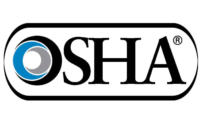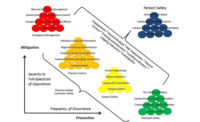In the COVID-19 era, a little creativity in training goes a long way

This is no ordinary back-to-school season. After all, millions of students won’t actually be going back to school this fall, but learning from home instead. And they’re not the only ones. Right now, organizations throughout the United States have no choice but to train their workforces remotely. It’s one of the ways the COVID-19 crisis has forced us to get creative and adapt to new limitations of technology, time, and attention spans.
Half a year into the pandemic, challenges remain. How do you make up for the lack of live interaction and engagement between learners and presenters? How can you ensure people are absorbing and retaining information? And how do you manage all that while meeting OSHA standards and other regulatory requirements?
These questions don’t have easy answers. There’s no perfect approach, no single tool you can plug in to optimize learning and achieve impeccable results. That said, the challenges aren’t insurmountable. Whether you’re training your workforce remotely or on-site, there are steps you can take to maximize engagement and retention—and yes, keep regulators happy. Here are a few ways to inject creativity into your training program:
Break it up
If you haven’t incorporated microlearning into your safety training regimen, now’s the time to try it. Microlearning divides training courses into brief, bite-sized segments or “chunks.” Rather than sitting through a two-hour presentation that covers everything about a given topic, learners receive shorter and more targeted lessons over the course of several days or weeks. The content is the same, but the format is more digestible and easier to fit into people’s schedules.
It’s no surprise that the rise of microlearning has coincided with the advent of quick-hit video platforms such as YouTube and TikTok. People expect instant gratification, and our attention spans are shorter than ever. It’s common knowledge that audiences start to rapidly lose interest about 10 minutes into a presentation—but shorter is always better. By some estimates, the average attention span is just eight seconds.
Compared to conventional training, microlearning leads to better retention of information—as much as 22% better, according to one study from the Dresden University of Technology. This makes microlearning ideal for refresher training or any course that covers an ever-present risk or safety hazard. If it’s something workers potentially encounter every day, it should remain top-of-mind for longer than one day per year.
Think beyond checking the box
Many organizations recognize the power of microlearning but forgo it and other innovative forms of training out of concern for falling out of line with established procedures. The fear is that OSHA won’t approve of anything other than standard, check-the-box-style training.
So why not do both? In other words, why not conduct the two-hour annual training and then use other, more engaging methods to reinforce it throughout the year?
In fact, going beyond the bare minimum of regulatory requirements can only improve safety and compliance outcomes. Multidimensional, ongoing training not only keeps information fresh in employees’ minds, but also communicates the organization’s commitment to safety as well as the importance of safe workplace conduct. It’s about not just telling people what’s required, but why those requirements are in place.
Consider personal protective equipment, for example. Many organizations conduct PPE training once — and only once — per year. What message are employees receiving the rest of the year? Maybe three months after the training, a worker starts to forget what she’s learned. After three more months, she’s forgotten why PPE is even necessary; she’s thinking about how uncomfortable it is, and is no longer wearing it consistently. Consequently, after another three months, she gets into an accident.
If you take just five minutes every month to reinforce that annual training, you reduce the likelihood that someone will forget about it. This, in turn, moves the organization beyond mere compliance and helps establish a true safety culture. As a bonus, conducting the annual refresher becomes an easier lift—there’s less time and effort involved in retraining employees.
Know your audience
Regardless of however and how often you train your employees, it’s important to tailor the content to their specific learning needs, styles, and preferences.
Consider the following questions about your audience:
- What’s their education level?
- What kind of prior experience do they have? Is there a range of experience?
- What motivates them?
- Are there cultural and linguistic differences to keep in mind?
These kinds of considerations can unearth creative training ideas. If someone on staff has experience in electrical engineering, for instance, that person can act as a mentor or offer real-world examples of wiring hazards and safety concerns. If members of your workforce enjoy competing with each other, you could create a leaderboard or break learners into opposing teams.
Keep in mind that different people have different learning styles. Some learn by reading, others by listening, others by doing — e.g. by using their hands or working through simulated situations. Effective training is designed for diverse kinds of learners, combining typical lectures and presentations with multimedia content and interactive learning activities.
In addition to stylistic differences, there are variabilities in technological proficiency to think about. This is one reason distance learning can be so challenging. Not everyone feels comfortable navigating a computer or mobile device. Not everyone knows how to access compatible software or keep it up to date. Don’t assume your workforce can engage in remote training without guidance and support. And (if feasible) consider offering different options or a blend of online and in-person formats.
Remember: good training is learner and business centric
What do all of the tips above have in common? They’re all about focusing on the person learning, and most businesses start with learner centric objectives. But training courses also meet a business objective to foster positive change that impacts the bottom line. The real beauty is how the business and learner objectives work together.
If you have a training program that focuses on the individual learner, the learner is more likely to convert that knowledge to behavior change, therefore, positively impacting the bottom line. A lot of training courses start as learner centric and build up to business centric. Business-centric training is built, implemented, and scheduled from the top down, reflecting the needs and perspectives of executive leadership.
For training to work, it needs to be both business-centric and learner-centric. It should meet the learner where they are, speak their language, and align with their values and lived experiences. It also needs to meet the business’s needs and demonstrate return on investment with behavior change and better safety outcomes.
When it’s done right, it can invigorate the safety program, energize the workforce, and make training more engaging and fun for everyone. When you center the learner, countless new creative training opportunities emerge.
The upshot is that what’s good for people is good for business. Effective training translates into fewer accidents, injuries, and losses. A little time, money, and energy spent on training now will help you avoid spending a whole lot more down the road.
Looking for a reprint of this article?
From high-res PDFs to custom plaques, order your copy today!





